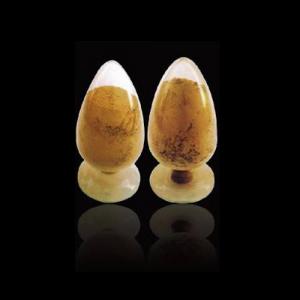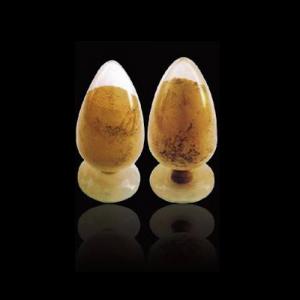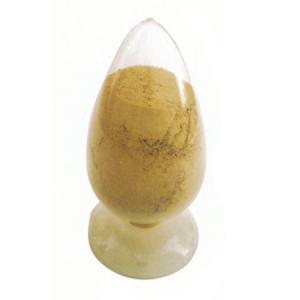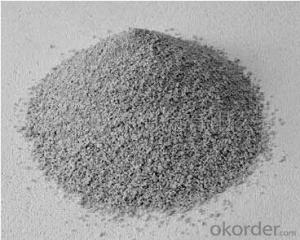Al2O3-SiO2-C Castable for Blast Furnace Tapping Channel
- Loading Port:
- China Main Port
- Payment Terms:
- TT or L/C
- Min Order Qty:
- 2 m.t.
- Supply Capability:
- 5000 Tons Per Month m.t./month
OKorder Service Pledge
OKorder Financial Service
You Might Also Like
General Information of Al2O3-SiO2-C Castable for Blast Furnace Tapping Channel
FIREF Al2O3- SiO2-C castable for blast furnace tapping channel is known for its excellent corrosion and scouring resistance of iron steel which is made strictly as per international standards. Beside, FIREF Al2O3- SiO2-C castable for blast furnace tapping channel has gained a good fame for its long operating life and easy execution and mending.
Technical data of Al2O3-SiO2-C Castable for Blast Furnace Tapping Channel
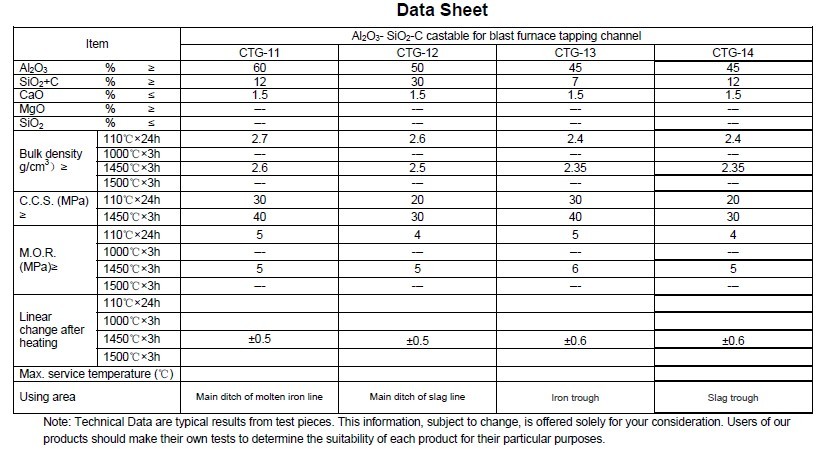
Production line and packing of Al2O3-SiO2-C Castable for Blast Furnace Tapping Channel
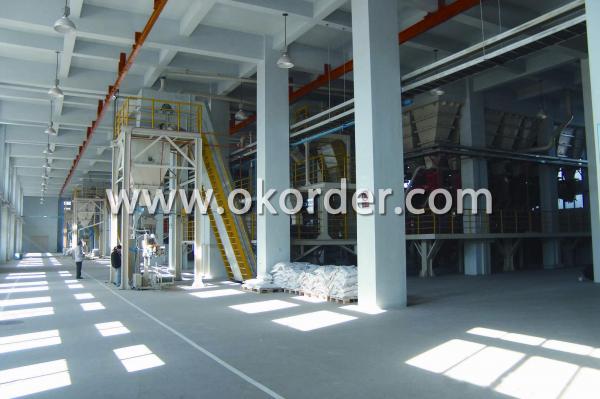

Feature of Al2O3-SiO2-C Castable for Blast Furnace Tapping Channel
Long operating life
Excellent corrosion and scouring resistance of iron steel
Easy execution and mending
Application of Al2O3-SiO2-C Castable for Blast Furnace Tapping Channel
FIREF Al2O3-SiO2-C castable for blast furnace tapping channel can be used widely for in situ casting or pre-casting for tri-angle area of UHP EAF roof.
Production Flow of Al2O3-SiO2-C Castable for Blast Furnace Tapping Channel

- Q:What are some common applications of monolithic refractories in the iron and steel industry?
- Monolithic refractories are widely used in the iron and steel industry due to their superior performance and versatility. Some common applications of monolithic refractories in this industry include: 1. Blast Furnace: Monolithic refractories are used in the lining of blast furnaces to withstand high temperatures and chemical reactions. They help in maintaining the structural integrity of the furnace and provide insulation against heat loss. 2. Ladle Lining: Monolithic refractories are used to line ladles, which are used for transferring molten iron or steel from the blast furnace to the steelmaking process. These refractories provide excellent resistance to thermal shock and erosion caused by the aggressive molten metal. 3. Tundish Lining: Tundish is an intermediate vessel used to distribute molten steel to multiple casting molds. Monolithic refractories are employed in the tundish lining to ensure proper thermal insulation and prevent contamination of the steel during casting. 4. Electric Arc Furnace (EAF): Monolithic refractories are used in the lining of EAFs to withstand the extreme temperatures and chemical reactions involved in the steelmaking process. They provide excellent resistance to high heat and erosion caused by the molten metal and slag. 5. Induction Furnace: Induction furnaces are used for melting and refining metals. Monolithic refractories are used in the lining of induction furnaces to provide insulation and protect the furnace structure from the high temperatures and chemical reactions occurring during the melting process. 6. Continuous Casting: Monolithic refractories are used in the lining of continuous casting machines to ensure smooth and consistent casting of molten steel. They provide excellent resistance to high temperatures, thermal shock, and erosion caused by the molten metal and slag. Overall, monolithic refractories play a crucial role in the iron and steel industry by providing durability, thermal insulation, and resistance to chemical reactions, thereby enhancing the overall efficiency and productivity of the manufacturing process.
- Q:What are the considerations for selecting monolithic refractories for ladles and tundishes?
- When it comes to choosing monolithic refractories for ladles and tundishes, there are a number of important factors to bear in mind. Firstly, it is crucial to select monolithic refractories that can withstand and maintain their strength and integrity at the extremely high temperatures experienced during metal casting processes. In addition, monolithic refractories with good thermal shock resistance are essential, as ladles and tundishes are subjected to rapid temperature changes during pouring and cooling. Such refractories can prevent cracking and spalling, ensuring the longevity and performance of these components. Erosion and corrosion resistance is another key consideration. Refractory linings can be eroded and chemically attacked by molten metal, slag, and other corrosive substances. Opting for monolithic refractories with excellent erosion and corrosion resistance can extend the service life of ladles and tundishes, reducing the need for maintenance and minimizing downtime. Mechanical strength is also important, as ladles and tundishes are frequently handled, transported, and subjected to mechanical stresses. Monolithic refractories with adequate mechanical strength can withstand these forces without cracking or breaking, thereby maintaining the structural integrity of these components. The method of applying monolithic refractories is another factor to think about. Depending on the size and shape of the ladles and tundishes, as well as the available equipment and expertise, different application methods such as gunning, casting, ramming, or spraying may be used. It is important to ensure that the selected monolithic refractories are compatible with the chosen application method. The thermal conductivity of monolithic refractories can impact heat transfer in ladles and tundishes. Opting for refractories with low thermal conductivity can help minimize heat loss and improve energy efficiency. While performance and durability are crucial, it is also important to consider the cost-effectiveness of the chosen monolithic refractories. This includes factors such as the initial cost of the refractories, installation and maintenance costs, and the expected service life. Striking a balance between performance and cost can help optimize the overall investment in ladles and tundishes. Overall, the selection of monolithic refractories for ladles and tundishes involves a combination of factors, including temperature resistance, thermal shock resistance, erosion and corrosion resistance, mechanical strength, application method compatibility, thermal conductivity, and cost-effectiveness. By carefully evaluating these factors, it is possible to choose the most suitable monolithic refractories that meet the specific requirements of ladles and tundishes in metal casting processes.
- Q:How do monolithic refractories withstand the thermal cycling in coke oven applications?
- Monolithic refractories are able to withstand the thermal cycling in coke oven applications due to their high thermal shock resistance and low thermal conductivity. They have a unique composition and structure that allows them to expand and contract without cracking or spalling under extreme temperature fluctuations. Additionally, their dense and homogeneous structure minimizes heat transfer, allowing them to maintain their integrity and strength even in the harsh conditions of coke oven operations.
- Q:What are the key factors to consider when designing the lining system with monolithic refractories?
- When designing a lining system with monolithic refractories, there are several key factors that need to be considered in order to ensure optimal performance and longevity of the lining. These factors include: 1. Material selection: Choosing the right monolithic refractory material is crucial. Factors such as the operating temperature, chemical environment, and mechanical stress need to be taken into account. Different monolithic refractories have varying properties and performance characteristics, so selecting the most suitable material for the specific application is essential. 2. Thermal expansion: Monolithic refractories, like any other material, expand and contract with changes in temperature. It is important to consider the thermal expansion properties of the refractory material and how it will interact with the surrounding structure. Proper expansion joints or design features should be incorporated to accommodate thermal expansion and prevent cracking or spalling. 3. Installation technique: The method of installation plays a critical role in the performance of the lining system. It is important to follow the manufacturer's guidelines for mixing, placing, and curing the monolithic refractory material. Improper installation can lead to reduced lining integrity, decreased thermal conductivity, and compromised structural stability. 4. Bonding and anchoring: Ensuring a strong bond between the monolithic refractory and the substrate is essential for effective lining performance. Proper surface preparation, selection of suitable bonding agents, and appropriate anchoring techniques should be considered to enhance the adhesion and stability of the lining system. 5. Structural design: The structural design of the lining system should be carefully planned to withstand the mechanical stresses and operational conditions. Factors such as load-bearing capacity, thermal shock resistance, and thermal cycling should be taken into consideration during the design phase. Reinforcement materials, such as steel fibers or mesh, may be required to enhance the structural integrity and prevent cracking or spalling. 6. Maintenance and repair: Anticipating the need for maintenance and repair is crucial for the longevity of the lining system. Consideration should be given to access points, inspection ports, and repair techniques. Regular inspections and proactive maintenance can help identify and address any issues before they escalate and lead to major failures. By considering these key factors when designing the lining system with monolithic refractories, one can ensure a well-designed and effective lining that can withstand the harsh conditions and provide long-term performance.
- Q:How does the choice of monolithic refractory impact the overall cost of iron and steel production?
- The overall cost of iron and steel production can be greatly affected by the choice of monolithic refractory. Monolithic refractory, unlike traditional brick or tile refractories, refers to a type of refractory material that is installed continuously. One important factor that impacts the cost of iron and steel production is the lifespan of the refractory. Monolithic refractories generally have a longer lifespan compared to traditional brick or tile refractories. This means that they require less frequent maintenance and replacement, resulting in lower overall costs over time. Additionally, monolithic refractories have a higher resistance to thermal shock and mechanical stress, which further extends their lifespan and reduces the need for repairs and replacements. Another crucial consideration is the energy efficiency of the monolithic refractory. These refractories possess better insulation properties, leading to reduced heat loss during the iron and steel production process. This helps lower energy consumption and, consequently, the overall cost of production. The improved insulation also contributes to a more stable and controlled temperature profile within the furnace, resulting in better product quality and reduced scrap rates. Furthermore, monolithic refractories offer greater flexibility in terms of installation and repair. They can be easily applied to complex shapes and structures, allowing for more efficient use of refractory materials. This reduces waste and lowers material costs. The ease of installation also saves time and labor, further contributing to cost savings. Additionally, monolithic refractories are known for their superior performance in high-temperature environments. They exhibit excellent thermal conductivity and resistance to chemical attacks, ensuring optimal furnace operation and reducing the likelihood of downtime and production delays. This, in turn, minimizes the impact of unexpected maintenance, repairs, and shutdowns on the overall cost of iron and steel production. In conclusion, the choice of monolithic refractory has a significant impact on the overall cost of iron and steel production. Its longer lifespan, improved energy efficiency, ease of installation and repair, and superior performance in high-temperature environments all contribute to cost savings in various aspects of the production process. Thus, careful consideration of the type of monolithic refractory used can result in significant cost reductions and improved overall efficiency in iron and steel production.
- Q:How do monolithic refractories resist thermal shock in the iron and steel industry?
- Monolithic refractories in the iron and steel industry resist thermal shock primarily due to their ability to absorb and distribute thermal stress. These refractories are composed of a single, continuous structure, eliminating the weaknesses inherent in jointed or layered materials. Their dense and homogeneous structure allows for efficient heat transfer and expansion, minimizing the risk of cracking or spalling caused by sudden temperature fluctuations. Additionally, monolithic refractories possess high thermal conductivity, which aids in dissipating heat and preventing localized hotspots. Overall, their resilience to thermal shock makes them ideal for withstanding the extreme conditions of the iron and steel manufacturing processes.
- Q:How do monolithic refractories contribute to the overall efficiency of ladles and tundishes?
- Monolithic refractories play a crucial role in enhancing the overall efficiency of ladles and tundishes in several ways. Firstly, monolithic refractories are known for their excellent thermal insulation properties. By lining the ladles and tundishes with monolithic refractories, heat losses are minimized, resulting in reduced energy consumption and improved thermal efficiency. This insulation capability also helps in maintaining a consistent temperature within the ladles and tundishes, which is essential for the proper casting and solidification of molten metal. Moreover, monolithic refractories offer superior resistance to thermal shocks and chemical corrosion. Ladles and tundishes are subjected to extreme temperatures and harsh chemical environments due to the contact with molten metal and various fluxes or additives. The use of monolithic refractories ensures a longer service life for ladles and tundishes by preventing cracking, spalling, or erosion caused by these harsh conditions. This, in turn, reduces downtime for maintenance and replacement, leading to increased overall efficiency. Additionally, the flexibility and ease of installation of monolithic refractories contribute to the efficiency of ladles and tundishes. Unlike traditional brick lining, monolithic refractories can be easily formed and installed in various shapes and sizes, allowing for better customization and optimization of ladles and tundishes. This adaptability helps in improving the flow dynamics of molten metal, reducing turbulence, and enhancing the overall casting process efficiency. In summary, monolithic refractories enhance the overall efficiency of ladles and tundishes through their exceptional thermal insulation properties, resistance to thermal shocks and chemical corrosion, and flexibility in installation. By minimizing heat losses, extending service life, and optimizing the casting process, monolithic refractories contribute significantly to the overall efficiency and productivity of ladles and tundishes in the metal industry.
- Q:What are the advancements in monolithic refractory technology for the iron and steel industry?
- In recent years, significant progress has been made in the field of monolithic refractory technology for the iron and steel industry. Monolithic refractories, which are heat-resistant materials used to line the walls and floors of high-temperature industrial processes, have seen notable advancements. One of the key breakthroughs in monolithic refractory technology is the development of new and improved materials. Traditional refractory materials like firebricks have been replaced by more advanced options such as castables and gunning mixes. These upgraded materials offer superior performance in terms of thermal conductivity, thermal shock resistance, and erosion resistance. They can endure higher temperatures and can be applied more efficiently, resulting in enhanced process efficiency and reduced maintenance downtime. Another significant advancement is the utilization of advanced additives in monolithic refractories. These additives have the ability to enhance the properties of the refractory material, such as increasing its resistance to corrosion and erosion. They also improve the bond between the refractory and the substrate, ensuring a longer lifespan for the lining. Furthermore, the progress in monolithic refractory technology has led to the development of innovative installation techniques. Shotcreting, for example, has gained popularity due to its efficiency and ability to provide a uniform lining by spraying the refractory material onto the surface. Similarly, the use of gunning machines, which pump the refractory material at high velocity, has improved the speed and accuracy of installation. Moreover, there have been advancements in the design of monolithic refractories tailored specifically for various applications in the iron and steel industry. Refractories for blast furnaces, ladles, tundishes, and other critical equipment have been optimized to withstand the unique challenges and harsh conditions of these processes. The development of specialized monolithic refractories has resulted in increased productivity, reduced energy consumption, and improved product quality in the iron and steel industry. In conclusion, advancements in monolithic refractory technology for the iron and steel industry have brought about improved materials, advanced additives, innovative installation techniques, and specialized designs. These advancements have significantly enhanced the performance, durability, and efficiency of refractory linings in high-temperature industrial processes. Consequently, the iron and steel industry can benefit from increased productivity, reduced downtime, and improved product quality.
- Q:How do monolithic refractories enhance the performance and longevity of furnaces?
- Monolithic refractories play a crucial role in enhancing the performance and longevity of furnaces. These specialized materials are designed to withstand high temperatures, extreme thermal shock, and harsh chemical environments, making them ideal for lining furnaces. Firstly, monolithic refractories provide excellent insulation properties, ensuring minimal heat loss and maximum energy efficiency. By reducing heat loss, they help maintain a consistent temperature inside the furnace, allowing for more effective and efficient heating processes. This insulation also prevents the external environment from interfering with the internal temperature, ensuring stable and controlled heating operations. Secondly, these refractories have high resistance to thermal shock. Furnaces often undergo rapid temperature changes as they heat and cool down. Monolithic refractories are capable of handling these abrupt temperature fluctuations without cracking or spalling, thereby preserving the integrity of the furnace lining. This resistance to thermal shock also translates into improved safety, as it reduces the risk of sudden failure or damage to the furnace structure. Furthermore, monolithic refractories possess excellent chemical resistance, making them highly durable in aggressive environments. Furnaces are exposed to various corrosive gases, molten metals, and chemical reactions. The refractories' ability to withstand these harsh conditions ensures that the furnace lining remains intact and protects the underlying structure. This resistance to chemical attack also prevents contamination of the heated materials, ensuring the quality of the final product. Additionally, monolithic refractories offer easy installation and repair. Unlike traditional brick refractories, which require time-consuming and labor-intensive construction, monolithic refractories are typically cast or gunned into place, allowing for quick and efficient installation. Moreover, if any damage occurs, these materials can be easily patched or repaired, minimizing downtime and ensuring continuous furnace operation. In summary, monolithic refractories greatly enhance the performance and longevity of furnaces by providing excellent insulation, resistance to thermal shock, chemical durability, and ease of installation and repair. By choosing the appropriate monolithic refractory material for specific furnace applications, manufacturers can significantly improve furnace efficiency, maintain consistent temperatures, ensure safety, and prolong the lifespan of their furnaces.
- Q:What are the recent developments in monolithic refractories for the iron and steel industry?
- Recent developments in monolithic refractories for the iron and steel industry include advancements in material composition, manufacturing techniques, and application methods. These developments have led to improved refractory performance, enhanced durability, and increased energy efficiency. Some notable developments include the use of new raw materials, such as nano-sized additives and ultra-high temperature-resistant binders, which enhance the refractory's resistance to thermal shock and corrosion. Additionally, advancements in manufacturing techniques, such as advanced mixing technologies and precise curing processes, have resulted in more homogenous and consistent refractory structures. Furthermore, there have been innovations in application methods, including the use of robotic systems for precise and efficient installation, leading to reduced downtime and increased productivity in the iron and steel industry. Overall, these recent developments in monolithic refractories have significantly contributed to the optimization of iron and steel production processes.
1. Manufacturer Overview |
|
|---|---|
| Location | Henan, China |
| Year Established | 2007 |
| Annual Output Value | Above US$ 60 Million |
| Main Markets | Mid East; Eastern Europe; North America |
| Company Certifications | ISO 9001:2008 |
2. Manufacturer Certificates |
|
|---|---|
| a) Certification Name | |
| Range | |
| Reference | |
| Validity Period | |
3. Manufacturer Capability |
|
|---|---|
| a)Trade Capacity | |
| Nearest Port | Tianjin |
| Export Percentage | 31% - 50% |
| No.of Employees in Trade Department | 21-50 People |
| Language Spoken: | English; Chinese |
| b)Factory Information | |
| Factory Size: | Above 36,000 square meters |
| No. of Production Lines | Above 5 |
| Contract Manufacturing | OEM Service Offered |
| Product Price Range | Average |
Send your message to us
Al2O3-SiO2-C Castable for Blast Furnace Tapping Channel
- Loading Port:
- China Main Port
- Payment Terms:
- TT or L/C
- Min Order Qty:
- 2 m.t.
- Supply Capability:
- 5000 Tons Per Month m.t./month
OKorder Service Pledge
OKorder Financial Service
Similar products
New products
Hot products
Related keywords
